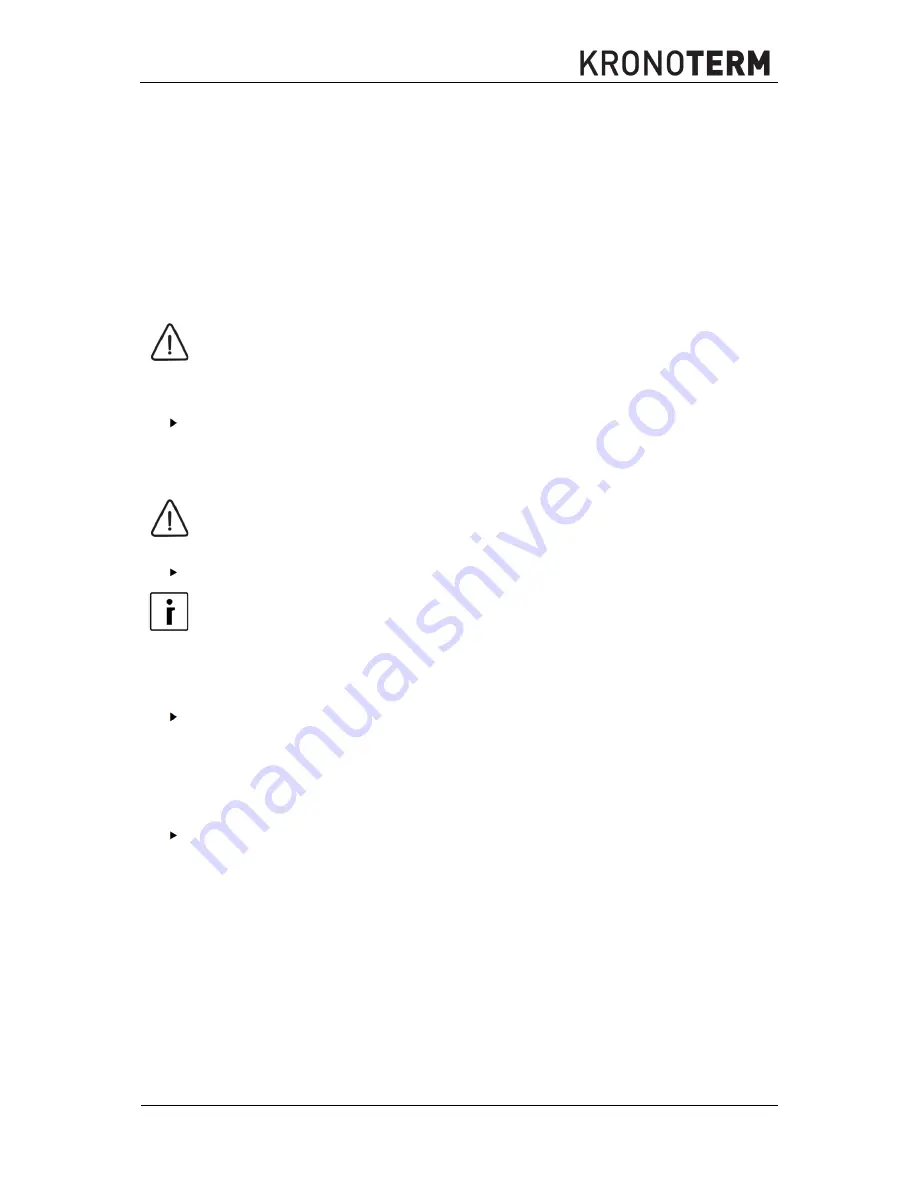
©Termo-tehnika, d.o.o.
ID.: 17-16-24-3006-03 | 12.2016
25
4.3.5 Leak test
After screwing the pipe check the tightness of the pipe connection between internal and external device.
Remove all non-condensing gasses and moisture from the device (the system needs to be vacuumed).
STEP 1: Preparation
Make sure both pipes (gas and liquid pipe) between the devices are connected correctly.
STEP 2: Leak test
Connect the service manometer (with pressure gauge) to the nitrogen gas bottle and filling pipes and
filling pipes on the service valves.
WARNING
Do not open the valves of the external device until all installation works are completed. The
device is filled with HFC refrigerant which expands at standard atmospheric pressure.
STEP 3:
Fill the system with nitrogen up to
1.1
x Max. operating pressure
Close the closing valve on
the nitrogen gas bottle at
1.1
x Max. operating pressure
. For
Max. operating pressure
of the
device, see chapter 7.2.
DANGER
When filling the system with nitrogen, follow proper safety distance and safety at work.
Close the valve on the nitrogen gas bottle.
NOTE
Prevent the penetration of nitrogen into the refrigerant system by always placing the upper
part of the nitrogen gas bottle with the valve higher than the lower part during filling of the
system. The gas bottle is used in vertical position.
STEP 4:
Use a soap solution to perform the leak test on all coupling areas of the pipes (on the external
as well as internal device) and both service/connection valves, the gas and liquid pipe. The
presence of bubbles indicates leakage. After the test, remove the soap solution with a clean
rag.
STEP 5:
If there was no leakage found on the device, vent the nitrogen out of the system.






























